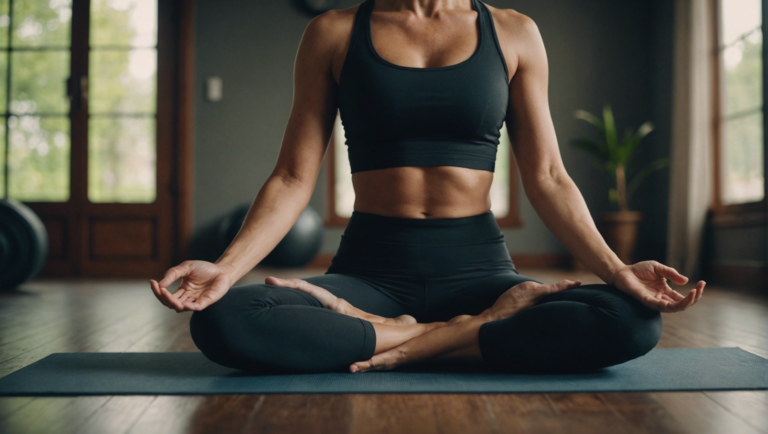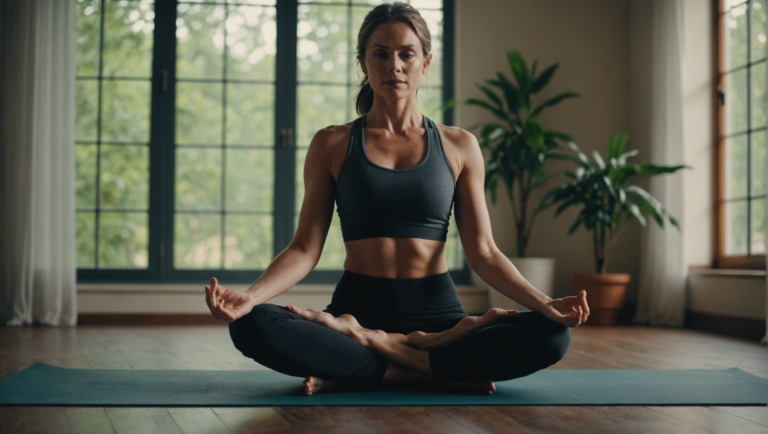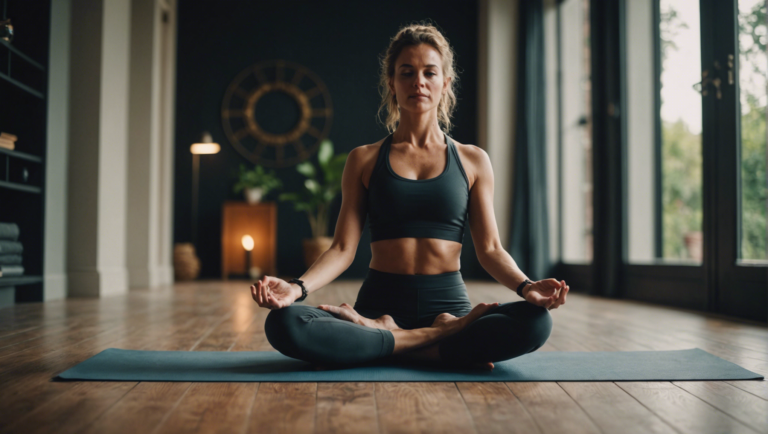Guidelines For Effectively Ending A Yoga Class
Key Components of a Proper Yoga Class Closing Sequence
Yoga classes are not only about the physical practice but also about the overall experience, including the closing sequence. Ending a yoga class properly is crucial to leave the practitioners in a state of relaxation and completeness. The closing sequence should reflect the essence of the class and allow participants to transition back to their daily lives with a sense of peace and well-being.
Importance of a Proper Closing Sequence in Yoga Classes
The closing sequence of a yoga class serves as a vital component that brings the entire practice together. It allows participants to absorb the benefits of the session fully and helps them integrate the physical, mental, and spiritual aspects of their practice. A well-structured closing sequence can leave a lasting impression on the practitioners and enhance their overall experience.
Mindful Breathing and Centering
One of the key components of a proper yoga class closing sequence is mindful breathing and centering. Encouraging students to focus on their breath and center themselves helps in calming the mind and preparing for the transition out of the class. Guided breathing exercises can also help in releasing any tension or stress accumulated during the practice.
Gratitude and Reflection
Expressing gratitude and encouraging reflection at the end of a yoga class can deepen the overall experience for the participants. Inviting students to reflect on their practice, set intentions, or express gratitude for their bodies and minds cultivates a sense of mindfulness and appreciation. It creates a positive atmosphere that resonates with the holistic principles of yoga.
Final Resting Pose (Savasana)
Savasana, or the Corpse Pose, is an essential part of the closing sequence in a yoga class. It allows practitioners to relax deeply, integrate the benefits of the practice, and prepare for re-entry into the outside world. Proper guidance during Savasana, including gentle cues for relaxation and releasing tension, can enhance the overall sense of tranquility and inner peace.
Closing Mantra or Affirmation
A closing mantra or affirmation can help seal the practice and leave a lasting impact on the participants. A mantra that resonates with the theme of the class or inspires positivity and self-love can uplift the spirits of the practitioners. It provides a sense of closure and connection to the deeper aspects of the yoga practice.
Final Thoughts
A proper closing sequence in a yoga class plays a significant role in enhancing the overall experience for the practitioners. By incorporating mindful breathing, gratitude, Savasana, and a closing mantra, yoga instructors can create a space for relaxation, reflection, and inner peace. Paying attention to these key components can ensure that the participants leave the class feeling rejuvenated, balanced, and centered.
Importance of Mindfulness During the Conclusion of a Yoga Session
Mindfulness plays a crucial role in the conclusion of a yoga session. As yogis wrap up their practice, it is essential to guide them through a mindful ending to help them transition back to their daily lives. Ending a yoga class mindfully can enhance the overall experience for practitioners and leave them feeling centered, balanced, and rejuvenated. Let’s delve into the importance of incorporating mindfulness techniques during the conclusion of a yoga session.
Creating a Sense of Closure
At the end of a yoga class, participants may feel deeply relaxed and connected to their body, mind, and spirit. Mindfulness practices during this time can help create a sense of closure, allowing individuals to reflect on their practice and carry the benefits with them off the mat. Encouraging students to take a few moments of stillness or offering a guided meditation can facilitate this process of closure and integration.
Cultivating Gratitude
Expressing gratitude is a powerful way to conclude a yoga session mindfully. Encouraging students to appreciate their bodies, their breath, and the opportunity to practice can foster a sense of thankfulness. A gratitude practice can shift focus from what may be lacking to acknowledging and appreciating the present moment, fostering positivity and contentment.
Embracing Mindful Breathing
Conscious breathing is a fundamental aspect of yoga and mindfulness. During the conclusion of a yoga class, guiding students to focus on their breath can help them anchor themselves in the present moment. Simple breathing exercises like deep belly breathing or alternate nostril breathing can promote relaxation, reduce stress, and enhance overall well-being as the session comes to an end.
Encouraging Self-Reflection
Taking time for self-reflection at the conclusion of a yoga class can deepen the practice and provide valuable insights. Encourage students to observe their thoughts, emotions, and physical sensations without judgment. This introspective practice can help individuals gain clarity, cultivate self-awareness, and promote personal growth both on and off the mat.
Setting Intentions
As the yoga session nears its end, inviting participants to set intentions for the rest of their day or week can be empowering. Encouraging them to reflect on what they would like to cultivate, release, or focus on can provide direction and purpose. Setting intentions mindfully can inspire individuals to live with greater awareness, alignment, and intentionality.
Incorporating mindfulness techniques at the end of a yoga class is essential for promoting holistic well-being and inner peace. By creating a mindful conclusion, yoga instructors can guide students towards a deeper connection with themselves and support them in carrying the benefits of their practice beyond the studio. Cultivating mindfulness during the conclusion of a yoga session not only enhances the individual experience but also fosters a sense of community and collective consciousness among practitioners.
Incorporating Gratitude Practices to End a Yoga Class Positively
Yoga classes are not just about the physical practice but also about the mental and spiritual aspects that can be cultivated to create a holistic experience. One powerful way to enhance the closing moments of a yoga class is by incorporating gratitude practices. Ending a yoga class on a note of gratitude can leave participants feeling uplifted, connected, and content. In this article, we will explore the significance of incorporating gratitude practices to end a yoga class positively.
The Power of Gratitude in Yoga Practice
Gratitude is a practice that involves acknowledging the good things in our lives, both big and small, and expressing appreciation for them. In the context of a yoga class, incorporating gratitude can deepen the overall experience for both the instructor and the participants. By cultivating a sense of gratitude, individuals can shift their focus from what is lacking to what is abundant in their lives, promoting a positive and optimistic outlook.
Setting the Intention
As a yoga instructor, setting the intention for the class is essential for guiding the overall energy and focus of the session. At the beginning of the class, you can introduce the theme of gratitude by encouraging students to reflect on something they are thankful for. Throughout the practice, weave in reminders about gratitude, such as appreciating the body’s abilities, the breath, or the community present in the class.
Gratitude Meditation
A short gratitude meditation at the end of the yoga class can be a powerful way to conclude the practice. Lead the participants in a guided meditation where they focus on things they are grateful for, such as their health, relationships, or personal growth. This meditation can help cultivate a sense of contentment and abundance, leaving participants with a positive mindset as they transition back to their daily lives.
Expressing Gratitude
Encouraging participants to express gratitude towards themselves, their fellow practitioners, and the instructor can foster a sense of community and connection. Consider incorporating a brief moment where everyone can share something they are grateful for or offer a simple gesture of thanks, such as a collective "Namaste" at the end of the class.
Gratitude Journaling
Suggesting gratitude journaling as a post-yoga practice can further deepen the impact of gratitude. Encourage students to take a few moments after class to write down three things they are grateful for. This practice can help reinforce the feelings of appreciation and positivity generated during the yoga session.
Gratitude practices to end a yoga class positively can have profound effects on the overall experience and well-being of the participants. By infusing the practice with gratitude from start to finish, yoga instructors can create a nurturing and uplifting environment where students can cultivate a deeper sense of contentment and connection. Let gratitude be the closing note of your yoga class, leaving everyone with hearts full of appreciation and joy.
Transitioning Students from Active Asanas to a Calm Savasana
Yoga instructors often find the transition from the active phase of a yoga class to the final relaxation pose, Savasana, to be a crucial moment in the overall experience for their students. This transition is where students shift their focus from the physical intensity of the active asanas to a state of complete relaxation and stillness. Effectively managing this transition can greatly enhance the overall yoga practice for students, allowing them to fully absorb the benefits of the class. Let’s explore some guidelines for smoothly transitioning students from active asanas to a calm Savasana.
Creating a Seamless Flow
Transitioning from active asanas to Savasana should feel like a natural progression rather than a sudden shift. To create a seamless flow, start by gradually slowing down the pace of the class as you approach the end of the active poses. Encourage students to focus on their breath and begin to cultivate a sense of inner awareness. Smoothly guide them from the dynamic movements of the active poses to a place of stillness and calm.
Mindful Cueing
Mindful cueing plays a significant role in transitioning students from active yoga poses to Savasana. Use clear and concise language to signal the winding down of the class. Encourage students to start releasing any tension they might be holding in their bodies and invite them to let go of any lingering thoughts or distractions. Your cues should help students shift their attention inward and prepare them for a state of deep relaxation.
Emphasizing Breath Awareness
As you guide students towards Savasana, place a strong emphasis on breath awareness. Encourage slow, deep breathing to help students relax both the body and the mind. Remind them to let go of any control over their breath and allow it to naturally deepen and slow down. By focusing on the breath, students can anchor themselves in the present moment and cultivate a sense of inner peace.
Offering Gentle Adjustments
During the transition to Savasana, offer gentle adjustments to help students find optimal comfort in the final resting pose. Support their relaxation by placing props such as bolsters, blankets, or blocks as needed. Ensure that each student feels fully supported and at ease in Savasana, allowing them to release any remaining tension and fully surrender to the pose.
Cultivating a Sense of Gratitude
As students settle into Savasana, encourage them to cultivate a sense of gratitude for their practice and the time they have dedicated to themselves. Remind them to acknowledge the benefits they have received from the class and to carry this sense of gratitude with them as they move back into their daily lives. A moment of reflection and thankfulness can further enhance the overall experience of the yoga class.
The transition from active asanas to Savasana is a pivotal part of a yoga class that requires mindfulness, clear communication, and a gentle guiding hand. By following these guidelines and creating a supportive environment for your students, you can help them experience a seamless and rejuvenating transition that leaves them feeling balanced, refreshed, and deeply connected to themselves.
Techniques for Effective Breathing Exercises in the Final Stages of a Yoga Class
Breathing exercises play a crucial role in yoga practice, especially in the final stages of a yoga class. These exercises not only help to deepen the mind-body connection but also aid in relaxation and stress relief. In this article, we will explore various techniques for effective breathing exercises that can be incorporated into the closing moments of a yoga session.
Importance of Breath in Yoga
The breath is considered the bridge between the body and mind in yoga. Conscious breathing not only oxygenates the body but also calms the nervous system and focuses the mind. In the final stages of a yoga class, emphasizing breath awareness can help students integrate the physical and mental benefits of their practice.
Ujjayi Pranayama (Victorious Breath)
Ujjayi pranayama, also known as the Victorious Breath, is a common technique used in yoga. This breathing exercise involves constricting the back of the throat to create a gentle oceanic sound while breathing. Encouraging students to practice Ujjayi pranayama towards the end of a yoga class can help promote relaxation and concentration.
Nadi Shodhana (Alternate Nostril Breathing)
Nadi Shodhana, or Alternate Nostril Breathing, is another effective breathing technique for the final stages of a yoga class. This practice involves closing off one nostril at a time while inhaling and exhaling. Nadi Shodhana helps balance the two hemispheres of the brain and is known for its calming and rejuvenating effects.
Savasana (Corpse Pose) Breathing
Savasana, also known as Corpse Pose, is typically practiced at the end of a yoga class for deep relaxation. Encouraging students to focus on their breath during Savasana can enhance the benefits of this pose. Guiding students to observe the natural flow of their breath without any control can promote a sense of surrender and tranquility.
Dirga Pranayama (Three-Part Breath)
Dirga Pranayama, or Three-Part Breath, is a simple yet powerful breathing technique that involves deep breathing into three parts of the torso – the abdomen, diaphragm, and chest. This practice helps expand lung capacity, increase oxygen supply to the body, and induce a state of calmness. Integrating Dirga Pranayama into the final stages of a yoga class can leave students feeling grounded and centered.
Closing Thoughts
Effective breathing techniques in the final stages of a yoga class can enhance the overall experience for students. By guiding students to connect with their breath, instructors can facilitate a deeper sense of relaxation, mindfulness, and well-being. Experimenting with different breathing exercises and finding what resonates best with the class can help create a closing sequence that leaves students feeling rejuvenated and balanced.
Conclusion
As yoga instructors, we hold the responsibility of guiding our students through a transformative journey during each class. The way we conclude a yoga session plays a significant role in ensuring that this journey is fulfilling and enriching for all participants. By incorporating key components of a proper closing sequence, we create a sense of closure and allow students to transition out of the practice mindfully. This includes cues for slowing down movements, reducing verbal instructions, and creating a peaceful atmosphere.
Mindfulness during the conclusion of a yoga session is paramount. Encouraging students to remain present, acknowledge their thoughts and emotions, and connect with their breath can deepen the overall experience. By fostering mindfulness, we help students carry the benefits of their practice off the mat and into their daily lives. Reminding them to stay rooted in the present moment, regardless of distractions or future plans, cultivates a sense of inner peace and awareness.
Gratitude practices to end a yoga class positively can have a profound impact on the energy in the room. Encouraging students to reflect on what they are grateful for, whether it be their bodies, their breath, or the community of practitioners around them, fosters a sense of contentment and appreciation. Expressing gratitude not only enhances the collective mood of the class but also fosters a sense of connection and unity among participants, creating a supportive and uplifting environment.
Transitioning students from active asanas to a calm savasana is a delicate process that requires attention to detail and a gentle approach. Guiding individuals to slowly release any remaining tension in their bodies, find a comfortable position for relaxation, and enter a state of deep rest allows for a seamless shift from dynamic movement to stillness. Creating a soothing atmosphere with calming music, dim lighting, and supportive props can enhance the overall relaxation experience during savasana, leaving students feeling rejuvenated and at peace.
Effective breathing exercises in the final stages of a yoga class can further deepen the relaxation response and help students prepare for rest and rejuvenation. Techniques such as diaphragmatic breathing, alternate nostril breathing, or simply mindful observation of the breath can assist in calming the mind, reducing stress, and promoting a sense of inner tranquility. Encouraging students to focus on their breath as a anchor can help center their awareness and facilitate a meditative state, preparing them for a restful savasana and a smooth transition back to their daily activities.
The way we end a yoga class is just as important as how we begin it. By incorporating key components of a proper closing sequence, emphasizing mindfulness, integrating gratitude practices, facilitating a smooth transition to savasana, and utilizing effective breathing techniques, we can create a holistic and fulfilling experience for our students. Ending a yoga session with intention and care not only solidifies the benefits of the practice but also leaves a lasting impression on participants, inspiring them to carry the essence of their practice beyond the studio walls and into their everyday lives.


